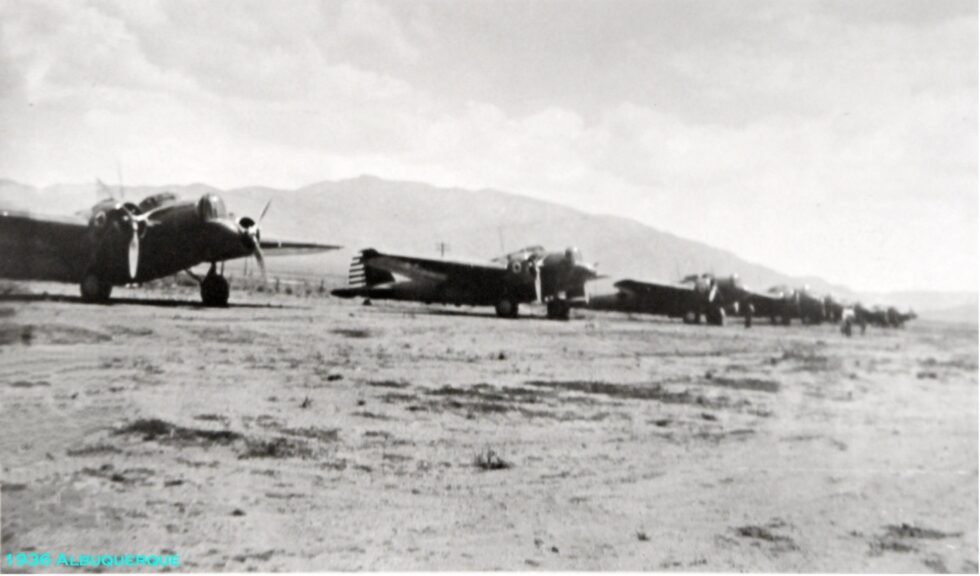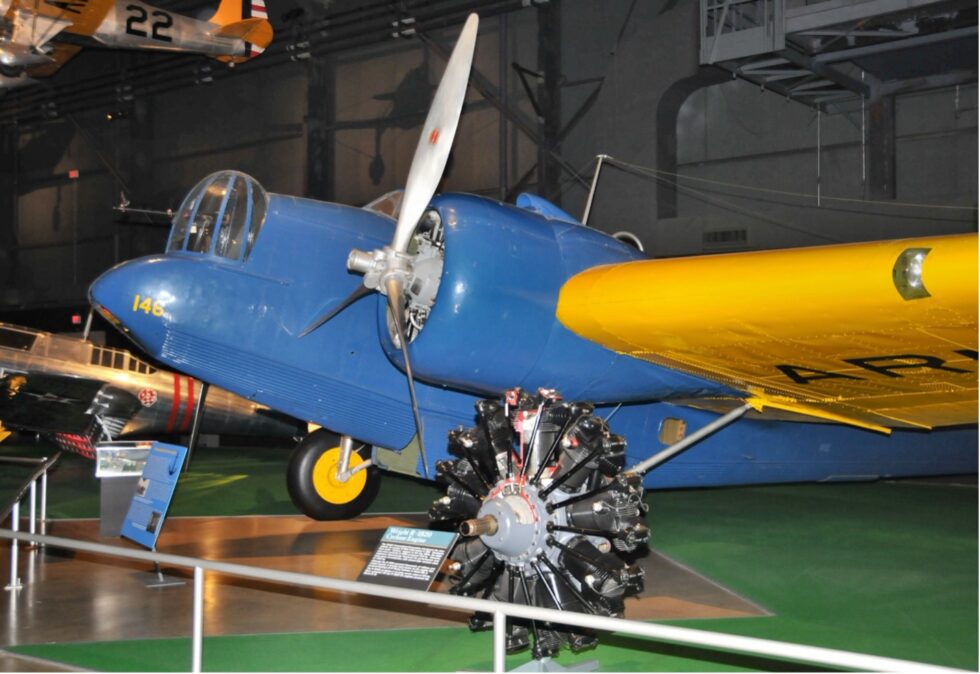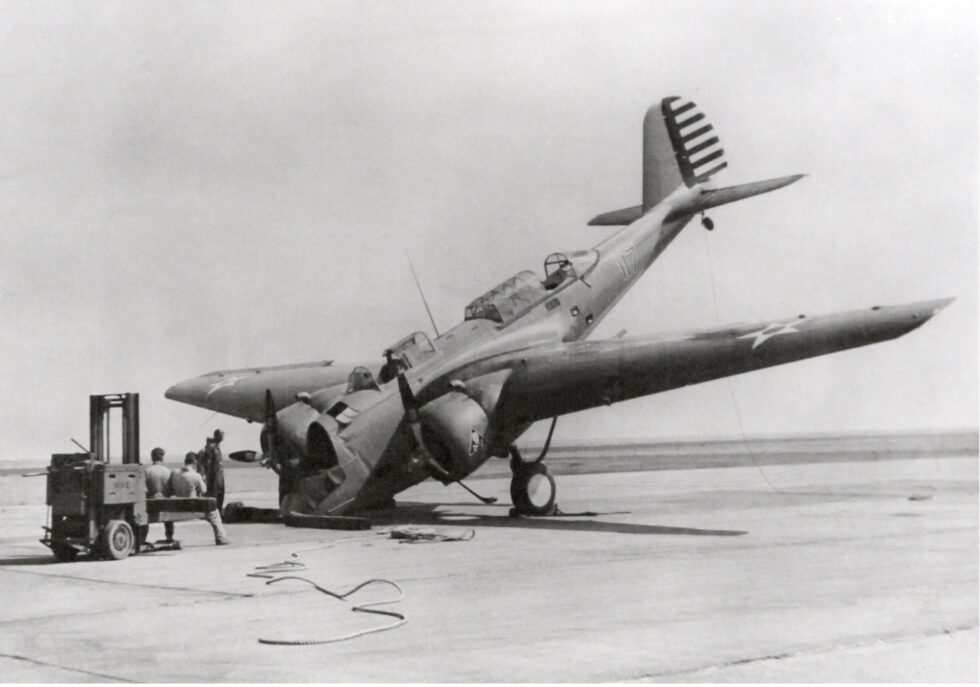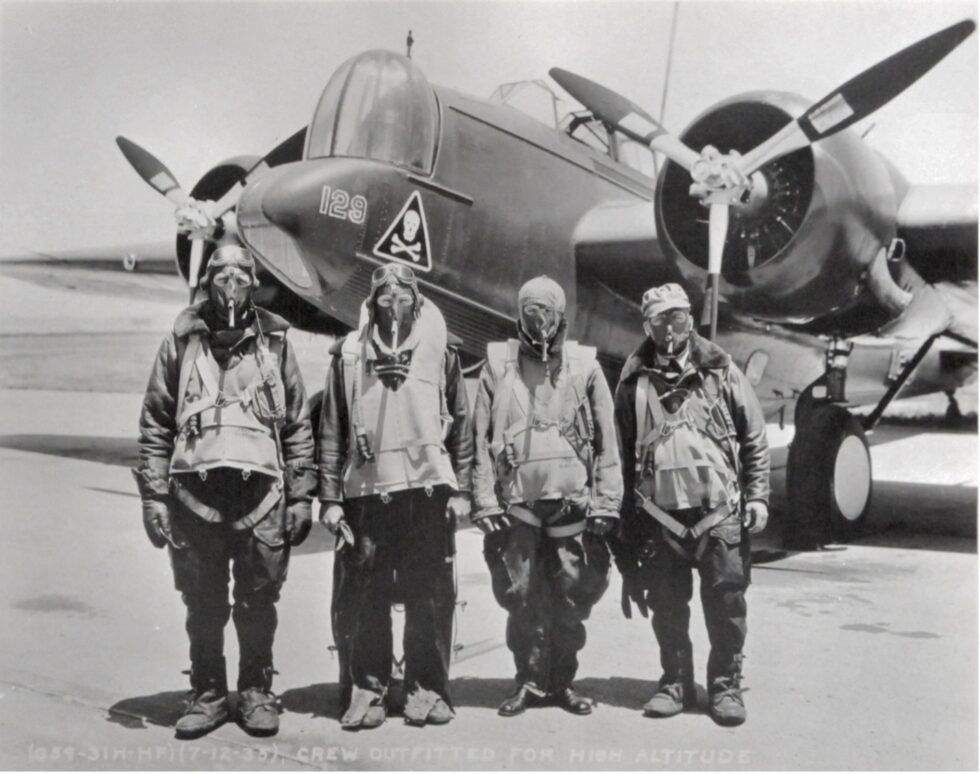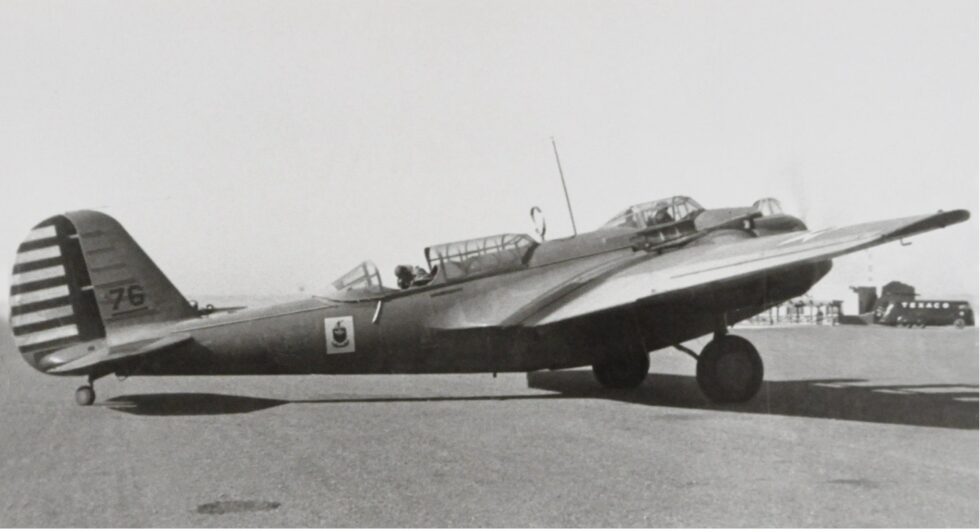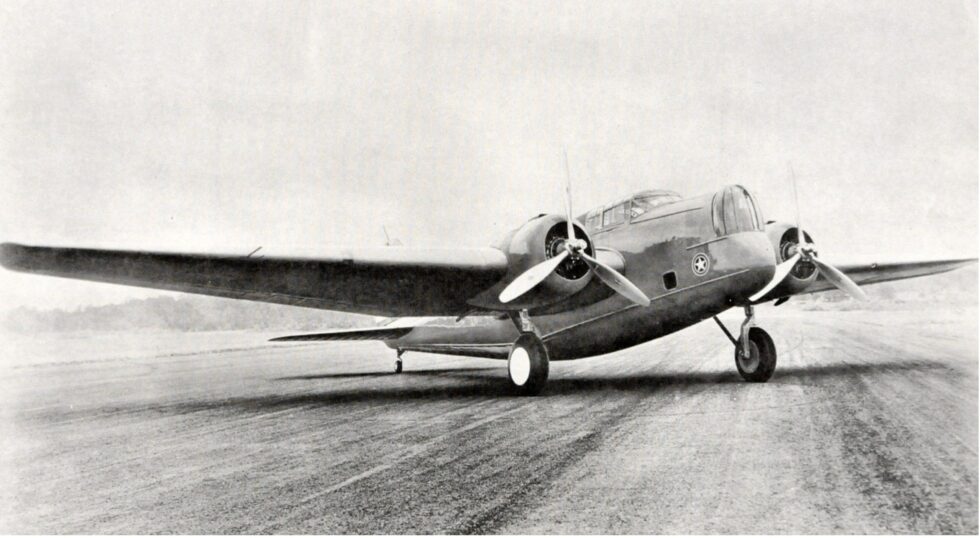U.S. Army Air Corps Martin B-10
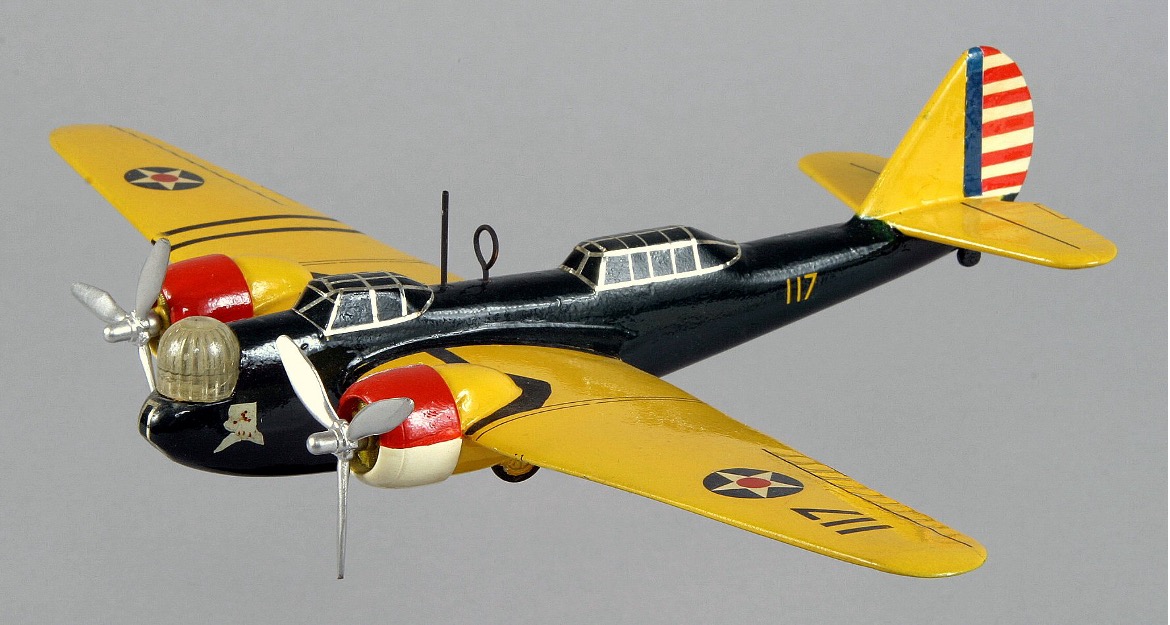
L. Baudoin
1/160
06/08/1965
historical significance
First Albuquerque Visit: 1934
Additional Information:
The Martin B-10 began as the Martin Model 123, the product of a private venture by the Glenn L. Martin Company of Baltimore, Maryland. The Martin B-10 was the first all-metal monoplane bomber to be regularly used by the United States Army Air Corps (USAAC) and entered service in June of 1934. The B-10 was also the first mass-produced bomber that was superior to the Army’s other pursuit aircraft of the time. The B-10 had a crew of four with the pilot, copilot, nose gunner, and fuselage gunner. The B-10 began a revolution in bomber design with its all-metal monoplane airframe, closed cockpits, rotating gun turrets, retractable landing gear, internal bomb bay, and full engine cowlings. These improvements became the standard for bomber designs worldwide and the B-10 made all existing bombers completely obsolete.
The B-10 served as the airframe for the B-12, B-13, B-14, A-15, and O-45 designations using the Pratt & Whitney engines instead of the Wright Cyclones. The production of the B-10 totaled 348 aircraft of all different versions that were built. The largest users of the B-10 were the United States with 166 aircraft followed by the Netherlands with 121 aircraft. The Glen L. Martin Company received the 1932 Collier Trophy for designing the B-10.
In 1934 a squadron of ten B-10s flew from California to Alaska. The squadron was led by Col. Henry H. “Hap” Arnold and the aircraft were used to conduct an extensive aerial mapping survey to evaluate Alaska as a base for flight operations. After that mission was completed the nine surviving aircraft toured the western United States to demonstrate how the B-10 could fly faster than most fighters and came to Oxnard Field in Albuquerque New Mexico in August of 1934. The Bombers then returned to Riverside, California on August 26, 1934. The aircraft again returned to Albuquerque on August 15, 1936 for US Army maneuvers.
A crew is seen posing in the flying clothing needed for high altitude flying in the B-10.
The only surviving Martin B-10 is on display in the Air Force Museum.

